With a SQL Server database, I try to write a query which looks like -
SELECT DATE, ID, NAME
FROM TEST_TBL
FOR XML ??
but I'm not sure which XML option (RAW, EXPLICIT, PATH, AUTO) can be used in the query to have an XML output like this:
<resultset>
<row>
<column name="DATE">01/01/2016</column>
<column name="ID">A01</column>
<column name="NAME">JOHN DOE</column>
</row>
<row>
<column name="DATE">01/02/2016</column>
<column name="ID">A02</column>
<column name="NAME">MARY DOE</column>
</row>
</resultset>
